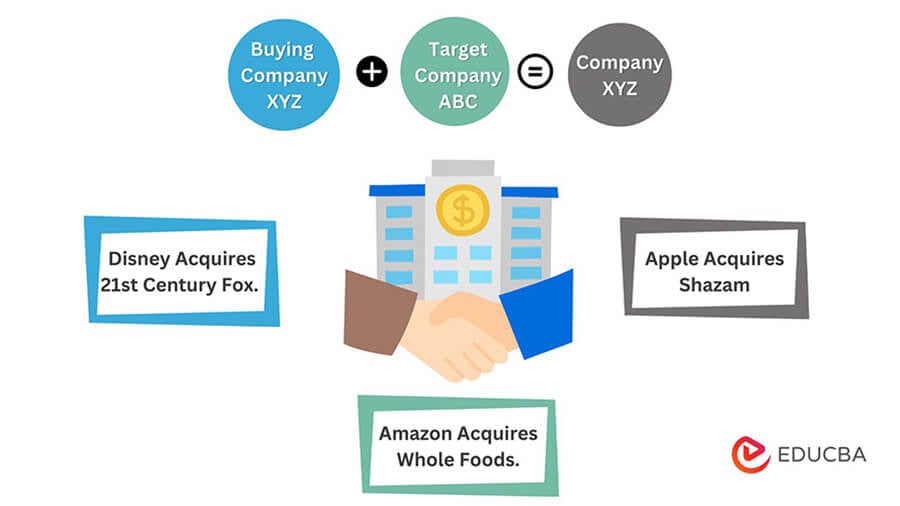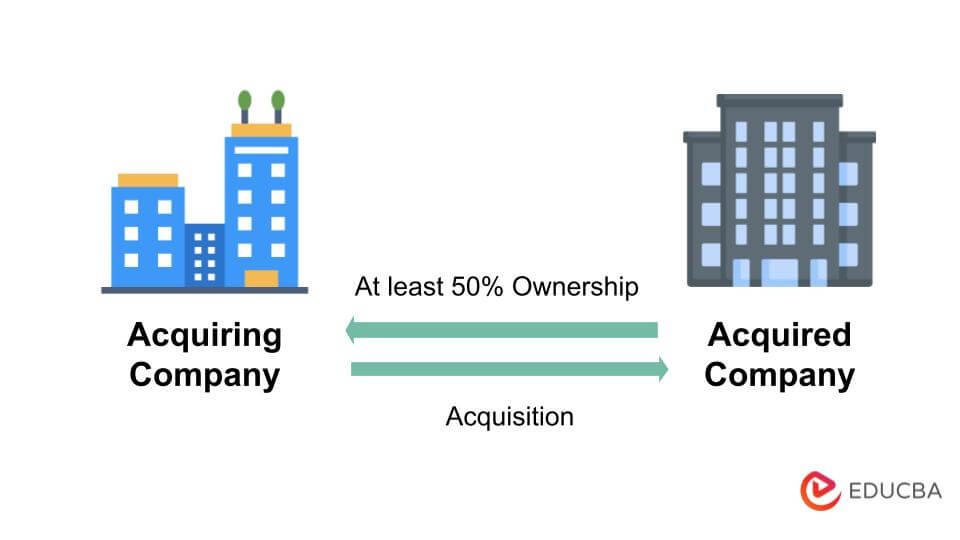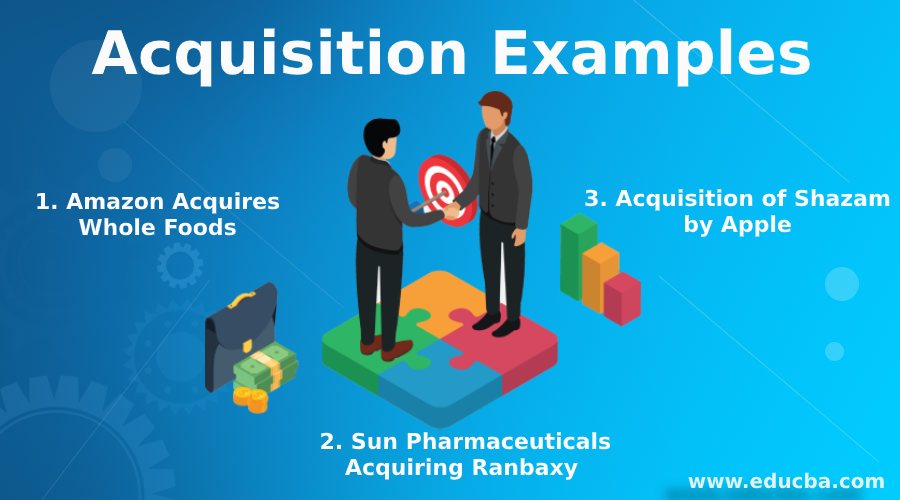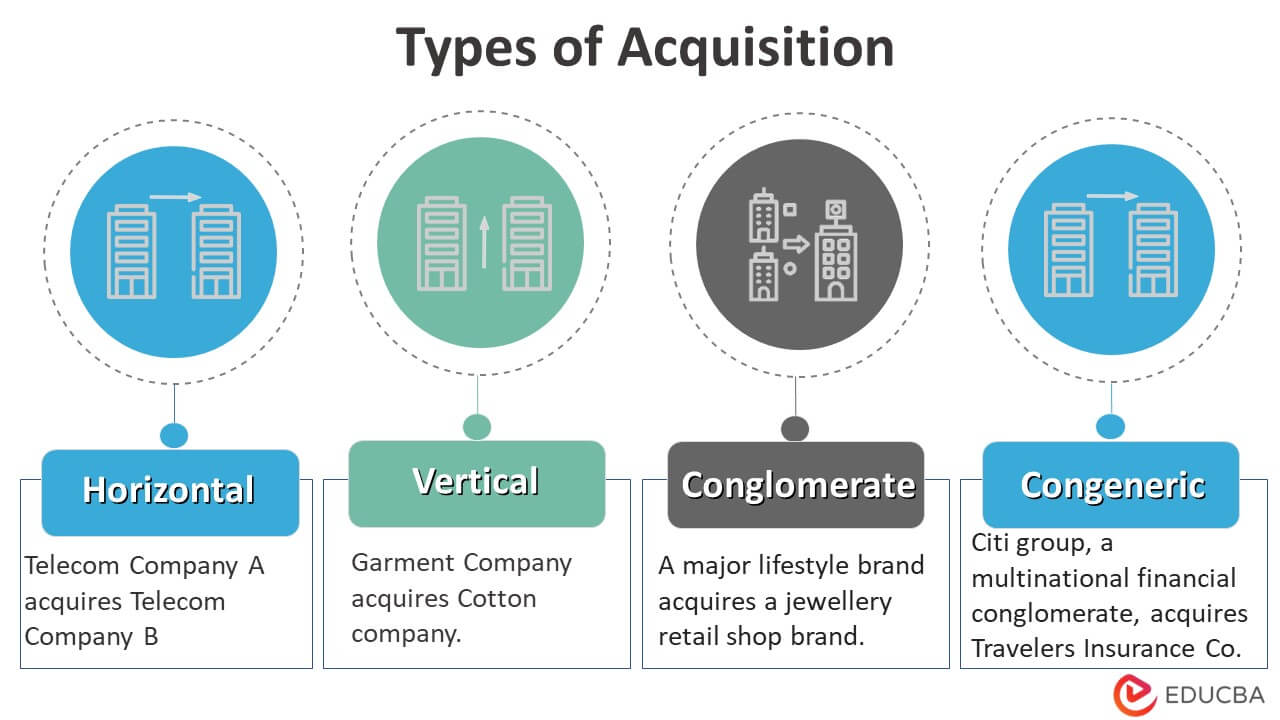Examples of Company Acquisition
Acquisition examples are as follows:
Example 1 – Acquisition of the Company Ranbaxy by the Sun Pharmaceuticals
The deal started when Sun Pharmaceuticals declared that it would acquire the company Ranbaxy and the deal got completed after that. The company got approval for the acquisition from different authorities. This acquisition example represents a classical share swap deal, wherein it was determined that Ranbaxy shareholders would receive four Sun Pharma shares for every five they held in Ranbaxy. 4 shares of Sun Pharma for 5 shares in Ranbaxy. This deal leads to the dilution of the 16.4 % equity capital of Sun Pharma.
Sun Pharma expressed interest in the acquisition because they believed that acquiring Ranbaxy would provide them with improved access to emerging markets and bolster Sun Pharma’s presence in the domestic market. After the merger, Sun Pharma can enter new markets by filling the gaps in the company’s offerings with the help of the acquired company.
With the help of the acquisition, it will also come to the first position as a generic company in the dermatology space. Before the acquisition, it was not holding as before; it was in the third position in the US market as a generic company in dermatology. The merger will help boost the products offered by Sun Pharma as it will create more visibility and market share in the pharmaceutical industry.
From the perspective of Ranbaxy also, the acquisition led to the turnaround of the distressed business.
Example 2 – Acquisition of the Company Whole Foods by the Amazon
In 2017, Amazon, the e-commerce announced that it would buy a high-end organic chain of groceries named Whole Foods for $ 13.7 billion or $ 42 per share. The deal was done officially by the end of August 2017. Whole food is a leader in the US for distributing natural and organic food products.
The acquisition by the Amazon of Whole Foods makes it possible to combine two leading brands, both focusing on the customer-centered approach. This will allow Amazon to expand the multichannel offering of its company and further enhance the customer experience in the market. Amazon expressed interest in the acquisition because it recognized the enormous potential for the development of Whole Foods. Initially, Whole Foods had a strong presence primarily in the U.S., but Amazon saw the opportunity to expand the same concept to other countries. Also, Amazon’s management knew that 33% of the company’s annual sales occurred in the fourth quarter of the calendar year. Diversifying into the food industry would help smooth out cash flows and address the seasonality issue associated with this sales pattern.
Thus, the acquisition was towards a rocky start, giving Amazon hundreds of physical stores and providing a strong entryway into the competitive food and grocery industry.
Example 3 – Acquisition of the Shazam by the Apple
Apple, in the year 2017, confirmed the acquisition of Shazam for the amount of $ 400 million by it.
Shazam is a well-known company among customers that lets users identify songs, TV shows, commercials, and movies from short audio clips.
Apple expressed interest in the acquisition because it saw the opportunity to leverage Shazam’s services to enhance Apple Music. At the time of the acquisition, Shazam had amassed a significant user base, with the app being downloaded over 1 billion times. Its users were also very loyal, so with the help of acquisition, Apple can get more paying customers for its own services like apple music. Also, Shazam was a profitable company and generated huge revenue through advertisements, so it makes sense for Apple to invest in the software brand, which already has a recurring amount of revenue and loyal users in some different countries of the world.





